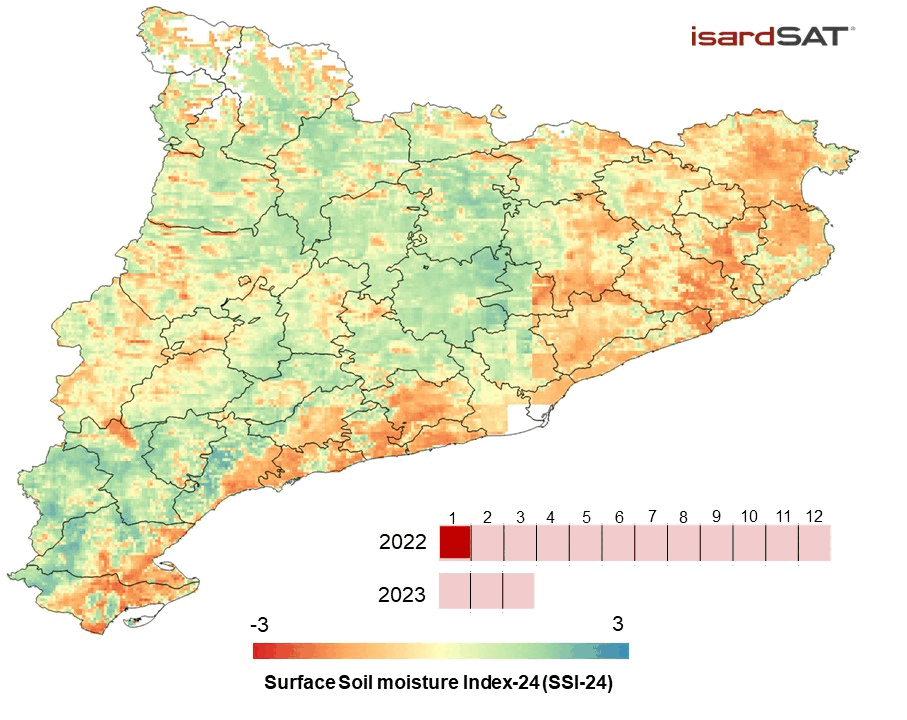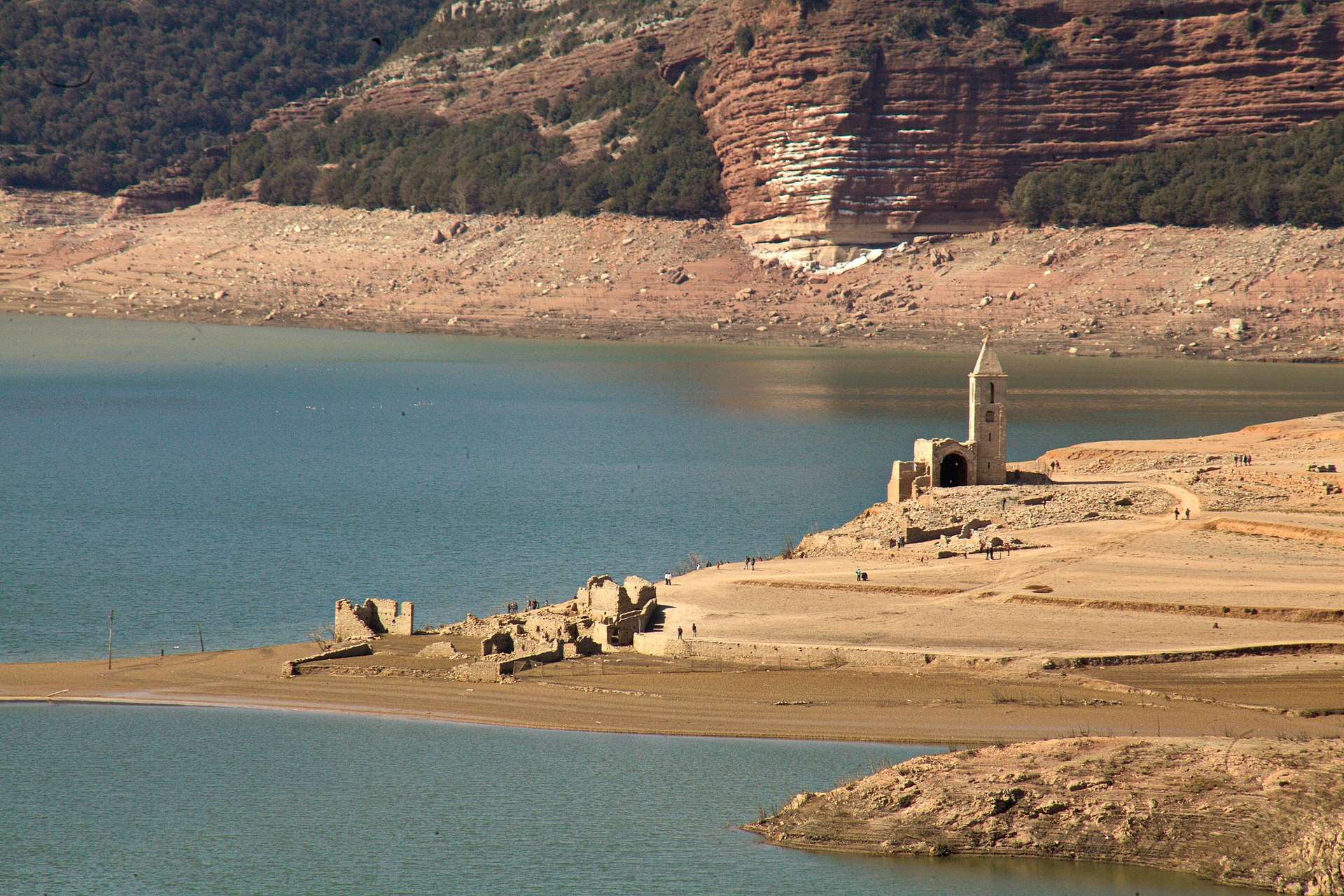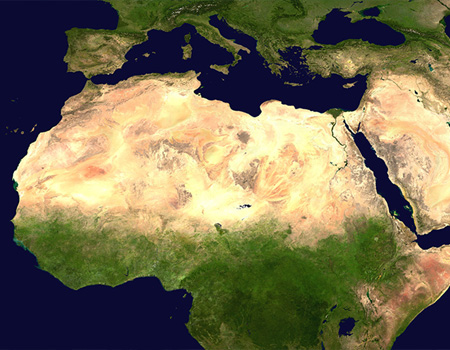
isardSAT has implemented a hydrological drought index based on soil moisture remote sensing data: the Standard Soil Moisture Index (SSI), which shows anomalies in soil moisture in comparison with the data of the previous 3, 12 or 24 months. “This index makes it possible to have a spatial view of the drought with a resolution of 1 km, even in areas where meteorological observations are not available”, explains Maria José Escorihuela, isardSAT researcher.
Hydrological drought, which occurs when the impacts of meteorological drought persist over time (i.e. rainfall deficiency, low humidity and occasionally high temperatures) has a watershed-scale impact, significantly reducing the level of aquifers and surface water reserves. This is the situation in which the Catalan internal basins find themselves, currently in an exceptional situation due to drought, with water reserves that are at an average of 26% (last consultation: 12/04/2023). This index would help to have a vision of the availability of water in the reserves, and therefore would offer a margin of adaptation for irrigated crops and other sectors that depend on it.
The 24-month accumulated standard soil moisture index (SSI-24) identifies with reddish tones the areas where the hydrological drought index is abnormally low, and with blue tones the areas where the corresponding month’s value is higher than in the last 24 months1. This study will be one of isardSAT’s contributions to the General Assembly of the European Geosciences Union (EGU), which will be held between the 23rd and the 28th April in Vienna.
 Pantà de Sau reservoir during March 2023.
Image: Wikipedia
Pantà de Sau reservoir during March 2023.
Image: Wikipedia
An opportunity to measure drought in areas without historical data
“We are validating this index with existing meteorological data in Catalonia and the Ebro basin”, explains Maria José Escorihuela, project researcher. “If it is shown that the results are valid, this index could be applied in areas where there is not as much data, as in other areas of Spain or around the world”, he adds.
References:
‘Hydrological drought monitoring in the Ebro basin: Standardized Soil Moisture Index’, by Guillem Sánchez, Maria José Escorihuela, Giovanni Paolini. https://meetingorganizer.copernicus.org/EGU23/EGU23-12010.html
